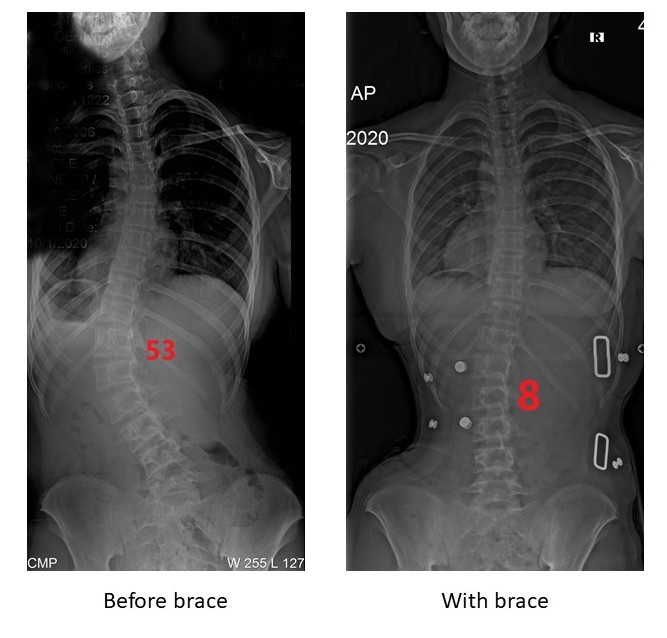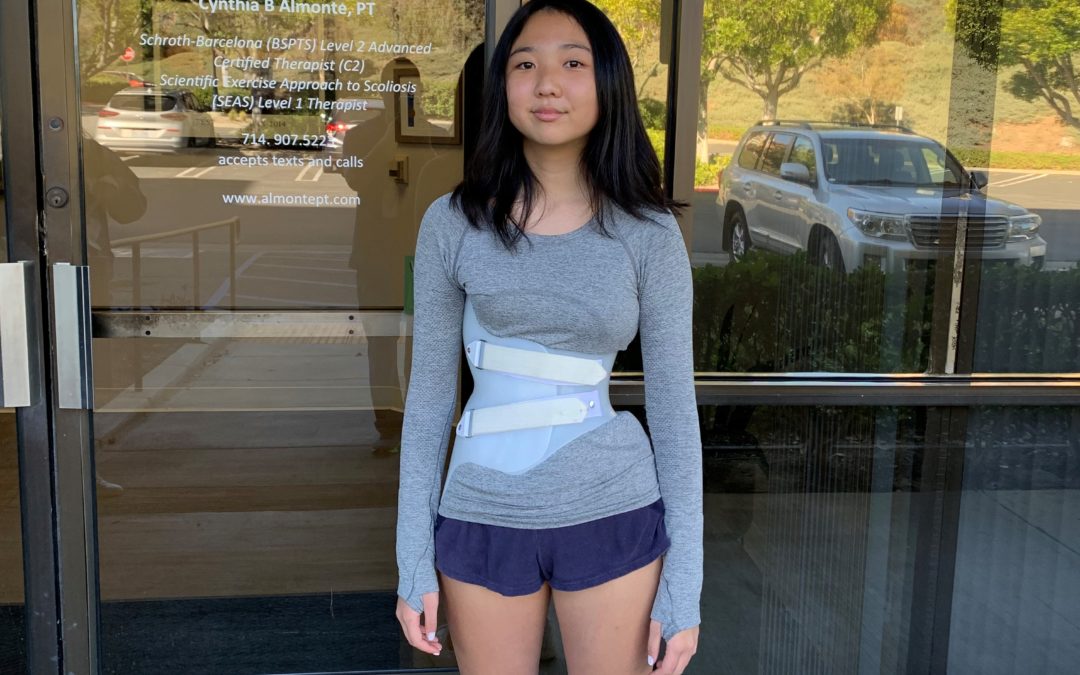Chloe was first diagnosed with scoliosis at age 12. Her initial x-ray showed she had a 29 degree curve. She had also started her menstrual cycles a year earlier, which typically meant there was a lower risk of her curve progressing. However, a year later she had a follow up x-ray which shockingly showed she now had a 53 degree curve.

At this point, her family had to make a decision on how to proceed. With her curve over 45 degrees, she was well into the surgery range. Also, despite being two years post-menarche, her x-ray showed her maturity at risser one, which meant she still has more growth remaining. Chloe’s orthopedic surgeon informed her family on the benefits and risks of spinal fusion surgery and vertebral body tethering, along with the option of pursuing conservative measures. Given this information, her family decided to pursue conservative measures first. She immediately jumped into a bracing program and Schroth physical therapy.
When we first met Chloe and her family, we also informed them of the realistic outcomes of bracing and Schroth given her circumstances. While we also strive for curve stabilization or improvement, it becomes much more challenging with high curvatures. The brace would need to be extremely aggressive, and be worn as much as possible. Fortunately, Chloe was up for the challenge, and we fit her for her brace the next week.
At her initial brace fitting, due to the design of the brace and Chloe’s flexibility, we noticed she was already visibly straighter and more balanced with her brace on. A height measurement that day showed she was 3 cm taller while wearing the brace. From the outset, we anticipated her curve would show significant improvement when braced. One month later, an in-brace x-ray confirmed our thoughts, as her curved reduced to 8 degrees!

Chloe’s curve improvement in-brace is extreme but certainly not unprecedented. Over the years, we’ve seen many patients with similar curves achieve these results though a good conservative scoliosis management program, with many patients ending up with curve improvement. Some have even avoided surgery when previously in surgical ranges. While it is less likely in cases of high curvatures, it’s certainly not impossible. In Chloe’s case, the initial results are very promising, and we’ll continue working with her as she grows.


Recent Comments